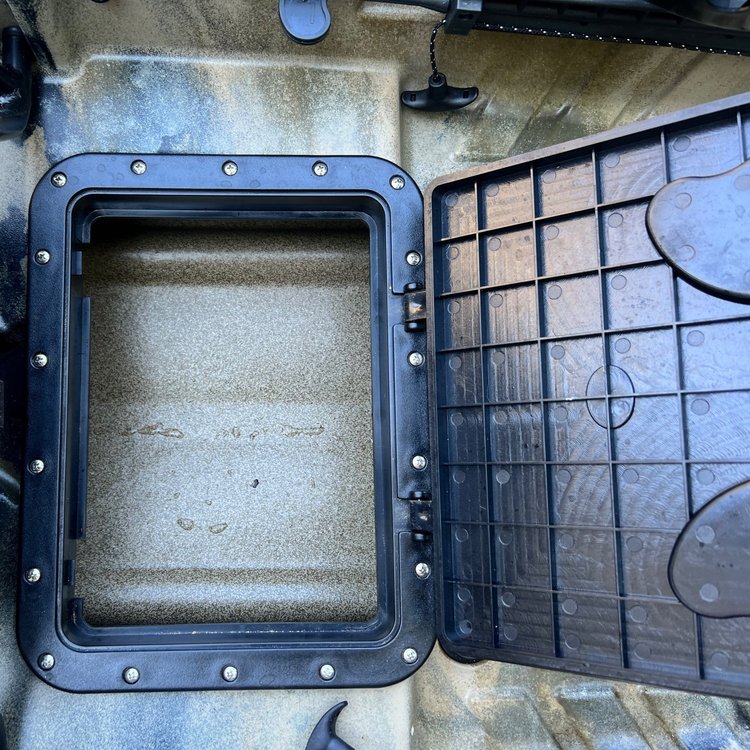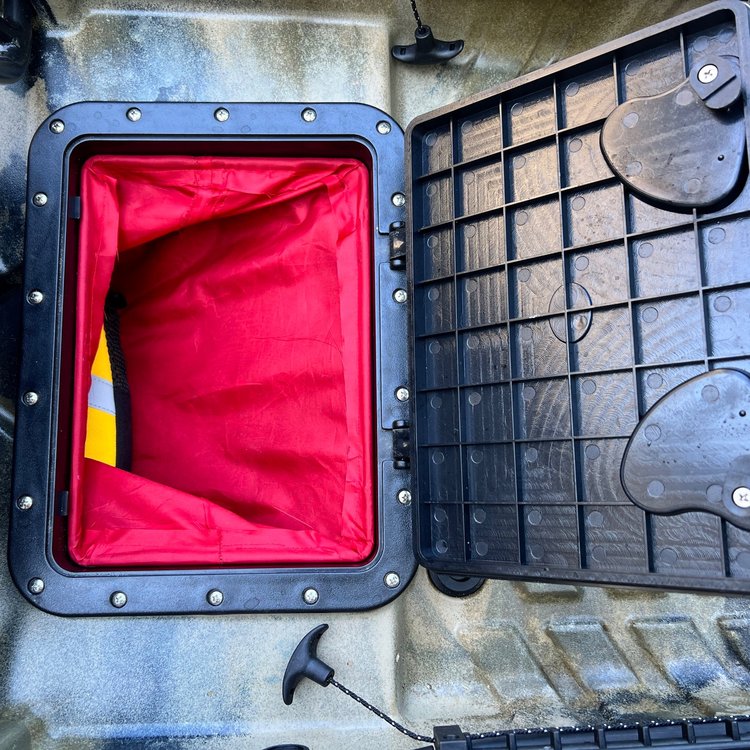Expert Verdict: Is Brooklyn Kayak's FK285 the Ultimate Angler's Kayak
Table of Contents
Every time I’m near water, as both a photographer and an outdoor enthusiast, I find myself wishing I had a kayak. You see, the best shots often aren’t from the shore; they’re out there on the water where the view is unobstructed and the perspective is unique. After adding more outdoor adventure content to my YouTube channel, Sharp Focus, the pull to get closer to the action became irresistible.
So, I decided it was time to dive in and purchase my own kayak. After some research and comparison, I chose the Brooklyn Kayak Company 9.2' sit-on-top kayak, specifically designed for anglers. It’s stable, maneuverable, and just the right size to handle both calm lakes and more challenging waters—ideal for capturing those stunning, hard-to-reach shots.
Key Takeaways
If you’re on the fence about buying a kayak, whether for photography, fishing, or just exploring the waters, here are a few things to consider prior to making a purchase.
Access Unbeatable Views: On a kayak, you can paddle out to find those perfect, untouched spots for photography or simply enjoying nature. You’re no longer limited to crowded viewpoints or the water’s edge.
Enhance Your Fitness: Kayaking is not only fun; it’s a great workout that combines strength training with cardiovascular exercise, all while you explore and enjoy the outdoors.
Connect with Nature: There’s something about being on the water that’s incredibly calming. Kayaking allows you to slow down, sync up with the rhythm of the waves, and truly connect with the natural world.
Adventure Awaits: Each trip in a kayak is an adventure. Whether you’re navigating through misty mornings on a quiet lake or tackling gentle river rapids, each paddle brings a sense of discovery.
Type of Kayak
One of the reasons I waited so long to purchase a kayak was that I had no idea where to start. There are so many types of kayaks available. You can buy everything from a recreational kayak to sea kayaks, ocean kayaks, whitewater kayaks, folding kayaks, inflatable kayaks, or even a fishing kayak. I'm sure many people can easily decide which category of kayak they should purchase, but for me, it was a little more complicated. I’d use the kayak for many different purposes. I wanted a whitewater kayak that I could use as a recreational kayak and do some kayak fishing out of. I did a lot of research and landed on Brooklyn Kayak Companies 9.2' sit on top Single Fishing Kayak.
Sit on Top Kayak

You can purchase two different types of kayaks. You can go with a sit-on-top kayak or a sit-inside kayak. Sit-inside kayaks are designed more for white water adventures where you need additional protection from taking on water. Sit on tops are more developed as recreational kayaks for touring, sightseeing, and fishing. My problem here was I wanted to do all of the above however my opportunities for white water adventures were much more limited since I live in Delaware. Delaware has exactly zero mountain streams. Although I would be using the kayak for some whitewater adventures, the best kayak for most of my purposes would be more of a recreational kayak. Sit on tops allow easier access to gear. They also provide a better chance of getting on or off the kayak when you are in the water.
Solo Kayaks vs. Tandem Kayaks
This question was an easy one for me. A solo kayak was by far the best option. I previously owned a tandem sea kayak. Due to its size, my family used it 3 times in as many years. Large kayaks tend to be much harder to transport unless they're inflatable or foldable. Giant inflatable or foldable kayaks have logistical issues as they take time to set up. I wanted a kayak I could easily pick up and transport in the back of my Cheverlote Rocky Ridge 1500.
Choosing the Right Kayak for Stability and Ease
Selecting the perfect kayak can feel like walking a tightrope, especially when balancing factors like size, stability, and ease of transport. Sea kayaks and tandem kayaks, known for their larger size and weight, offer enhanced stability but can be a challenge to handle solo. Recreational kayaks, on the other hand, provide a more user-friendly option due to their lighter build and more manageable dimensions.
As a photographer and angler, stability was non-negotiable for me. The thought of my kayak tipping and sending my expensive camera gear into the water was a deal-breaker. Yet, I also needed a kayak that wouldn’t strain my back when lifting it—after all, I’m not as spry as I used to be at 42! This dual need for stability and manageability led me to a thorough search for the ideal kayak.
Finding the Perfect Match: Brooklyn Kayak Company’s FK285

My search culminated with the Brooklyn Kayak Company’s FK285 sit-on-top fishing kayak. At 9 feet 2 inches and weighing 50 lbs, it strikes a perfect balance—short enough to fit snugly in the bed of my truck and light enough for me to handle easily. Its compact size does not compromise on stability, making it an ideal choice for photographers and anglers who need a steady platform.
Consider Weight Capacity Carefully
Another crucial aspect to consider is the kayak's weight capacity. It’s a common misconception that the kayak’s weight limit should just exceed the user’s weight. In reality, you need to factor in all the gear you plan to bring along. For instance, I weigh 210 lbs, but I need to account for up to 150 lbs more for my camera equipment and any additional gear for overnight trips. Smaller kayaks often have lower weight capacities, so it's essential to calculate the total weight to ensure safety and performance.
For anyone in a similar situation, here are a few tips to keep in mind when selecting a kayak:

Stability vs. Mobility: Determine your priority. If you're using the kayak for photography or fishing, stability might trump size. If you're into recreational paddling, a lighter and more agile kayak might suit you better.
Test Before You Buy: If possible, try out different models. What feels stable and comfortable to one person might feel different to another.
Read Reviews: Utilize online reviews and kayak forums. Searches like “shortest stable kayak reviews” can lead to firsthand experiences and recommendations.
Think Long-Term: Consider how your needs might evolve. What fits your current lifestyle might not suit in a few years. Think about durability, potential for upgrades, and resale value.
Storage space is huge when considering a kayak for overnight trips. This kayak checks all the boxes for a small size kayak with storage space. Two access ports allow access to the haul below. The front access port I usually use for food and snacks since it's smaller.
The storage ports come with little fabric baskets that keep things from getting lost in the haul; however, you can easily pull the fabric baskets out and stow water bottles or whatever you'd like. Just be careful with what you place in the haul, as it will most likely be exposed to some water. The access hatch in the middle is more prominent and rectangular. I usually place my camera gear and frequently used items in this access port as I can access it while sitting on the kayak. The storage options are phenomenal on the kayak compared to other similar kayaks.

Having ample cargo space was an essential factor for me in choosing a kayak. I would have preferred bungee strap-down systems on both the front and the back, but at least the FK285 had one. A lot of options for smaller kayaks didn't have any preinstalled. The bungee systems are my first concern with the FK285 kayak. The bungee system is not the easiest to use with a bag of any size to it under the bungee system. The bungee system works fine for small packs, but once the pack stands more than 4-6 inches above the plane of the bungee system, it becomes much harder to fasten. I'll probably replace this bungee system and add one in the front.
Most kayaks come with holes with scupper plugs. If you anticipate much water splashing on top of the kayak, you'll want to leave the scupper plugs out; however, keep them on the kayak in a safe place easily accessible. When the scupper plugs are out, there will be a shallow depth of water flowing in and out of the areas where the plugs are located, basically everywhere. When you expect calm waters with little to no splash, leave the scupper plugs in so you can have a much dryer ride.
The kayak comes with foot pegs or pedals preinstalled. They are adjustable and seem like a great feature. Whitewater kayaks are designed to take a little more stress to the foot pedals. When you navigate whitewater, you use your feet to help leverage power to paddle aggressively. Whitewater navigation often requires heavy bursts of power paddling to get to the run you'd like. The foot pedals on my kayak showed severe wear after a single whitewater trip of class 1,2 and some 3 whitewater rapids. I will probably end up replacing the existing foot pedals.

Overall, I'm pleased with my choice of kayaks. Brooklyn Kayak company has a high reputation for manufacturing some of the best kayaks available. The boat's price of around $900 is a fair price for what you get. Beginner paddlers will enjoy this kayak as well as anglers. You can upgrade the kayak with many accessories, including a bilge pump. The boat has two built-in rod holders on each side and a removable articulating rod holder. I think this kayak is built for both beginner kayakers as well as experienced kayakers. The chair and seat pad are comfortable as well as easily adjustable. This kayak works beautifully in calm conditions, but its design allows it to perform very well in whitewater. The haul design allows for steady tracking in a straight line, deft turns, and responsible control. The FK285 is one of the best overall kayaks available today. I've been delighted with my purchase, but the magic question is would I purchase the same kayak again after getting the opportunity to break it in? The answer is yes. The stability of the kayak is top notch. Storage options are excellent, and the boat allows you to enjoy your time on the water. If you are interested in purchasing a kayak, I want to seriously recommend you check out Brooklyn Kayaks FK285 before making a decision
FAQ
Q: Is the Brooklyn Kayak FK285 suitable for beginners?
A: Yes, its stability and user-friendly design make it a great option for beginners looking to get into kayaking or fishing.
Q: How much weight can the FK285 support?
A: The FK285 has a weight capacity of 350 lbs, making it suitable for most users along with their gear.
Q: Does the kayak come with rod holders?
A: Yes, the FK285 comes equipped with three rod holders—one detachable articulating rod holder in the front and two fixed rod holders in the back.
Q: How easy is it to transport the FK285?
A: Weighing 50 lbs, the kayak is relatively easy to transport, though some users may need assistance loading it onto a vehicle.
Q: Can the FK285 handle rough waters?
A: While the FK285 is stable and durable, it is primarily designed for calmer waters and may not perform as well in very rough conditions.
4o

